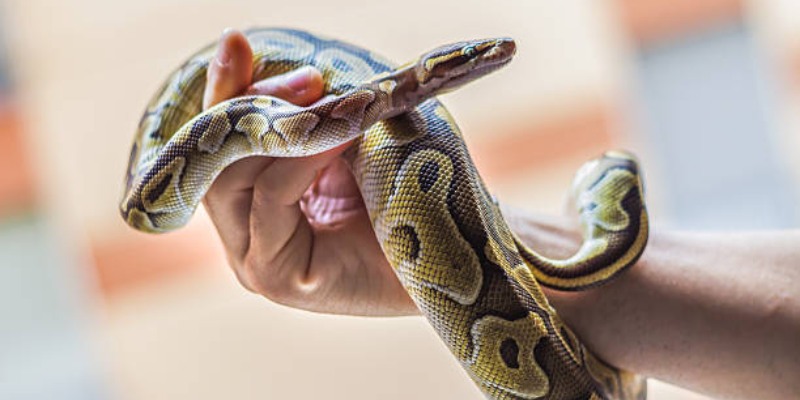Snakes have slithered into households across the globe as exotic and fascinating pets. However, despite their increasing popularity, several misconceptions remain about them, some rooted in fear, others in superstition. If you've ever questioned whether snakes make good pets or were too fearful to bring one home due to hearsay, this guide clarifies the facts. Let's unwind the truth behind 10 myths of snake ownership.
This is the largest myth of all. Most pet snakes, like ball pythons, corn snakes, and king snakes, are not venomous. Even the venomous breeds, like certain milk snakes, are specially bred in captivity for their docile temperament and venomlessness. Snake bites from pets rarely happen and may result only when the snake is threatened, generally due to improper handling or teasing.

Furthermore, snakes do not strike without provocation. They are generally timid beings, favouring concealment over conflict. With appropriate research and handling methods, the chances of injury remain minimal.
Snakes possess smooth, dry scales composed of keratin—the same protein that makes up human hair and nails. Despite the common myth, their skin is not slimy in the least bit. It is likely because of their sleek look or the fact that they slither along. Their scales are tidy and low-maintenance, with only periodic spot-cleaning of their habitats.
Unlike dogs or cats, snakes are solitary creatures. They do not enjoy attention and do not form emotional attachments like mammals. While frequent, gentle handling can accustom them to human presence, excessive handling can Stress them. Most pet snakes prefer to be alone, except when feeding or during brief interaction periods.
Snakes shed their skin periodically, but this (called ecdysis) is done entirely within their vivarium. The old skin peels off in one piece, like a sock turning inside out. Owners pull it out while cleaning as usual. Shedding is a clean process that does not create messes outside the tank.
Snakes are less maintenance-intensive than dogs or cats. They do not need daily walks, grooming, or complex toys. Their upkeep is about providing the correct temperature and humidity for their tank, feeding them every 1–2 weeks (species-dependent), and providing a clean water bowl. Once set up, their environment does not need much upkeep.

Frozen-thawed or pre-killed rodents are routinely fed to pet snakes, which are more sanitary and humane than live prey. Live feeding is dangerous—it can injure the snake if the prey fights back. Most responsible breeders and owners avoid live prey. Better still, some smaller snake species, like corn snakes, can thrive on pre-killed mice.
A properly maintained snake has no unpleasant odour. Their tanks require routine maintenance—spot-cleaning waste and full substrate replacements every couple of weeks—but this is comparable to the attention needed for any small pet. An unpleasant smell is usually the sign of improper hygiene or a health issue, not a problem with the snake.
Most snakes also have relatively long lifespans. Ball pythons will live 20–30 years, and snakes can live 15–20 years. This makes them a long-term commitment, although their low metabolism and inactive nature means they don't require daily interaction like shorter-lived pets.
Snakes do not provide the same interactive affection as dogs or cats, but many owners develop strong connections with their pets. Watching their behaviours, learning their needs, and appreciating their individuality can be fulfilling. It is a quieter, less chaotic type of companionship.
This myth is dangerous. Keeping snakes requires learning about the needs of specific species—temperature gradients, humidity, and an adequate diet. A "one-size-fits-all" approach can result in illness. New owners do best to start with novice species (like corn snakes) and consult quality guides or breeders.

If you’re considering a snake as a pet, start by:
Researching species: Pick a docile, hardy snake like a ball python or corn snake.
Setting up the tank: Invest in proper heating, lighting, and substrate.
Learning about feeding: Understand the frequency and prey size for your species.
Preparing for long-term care: Snakes aren't disposable but lifelong companions.
Debunking myths is just the first step. Responsible snake ownership involves education, patience, and respect for these creatures. Whether you're drawn to their beauty, low-maintenance lifestyle, or uniqueness, always prioritise their wellbeing. With knowledge and care, snakes can be enriching, mysterious, and surprisingly rewarding pets.
Snakes aren't for everyone, but neither are they the terrifying, high-maintenance monsters of myth. The truth? They're misunderstood.